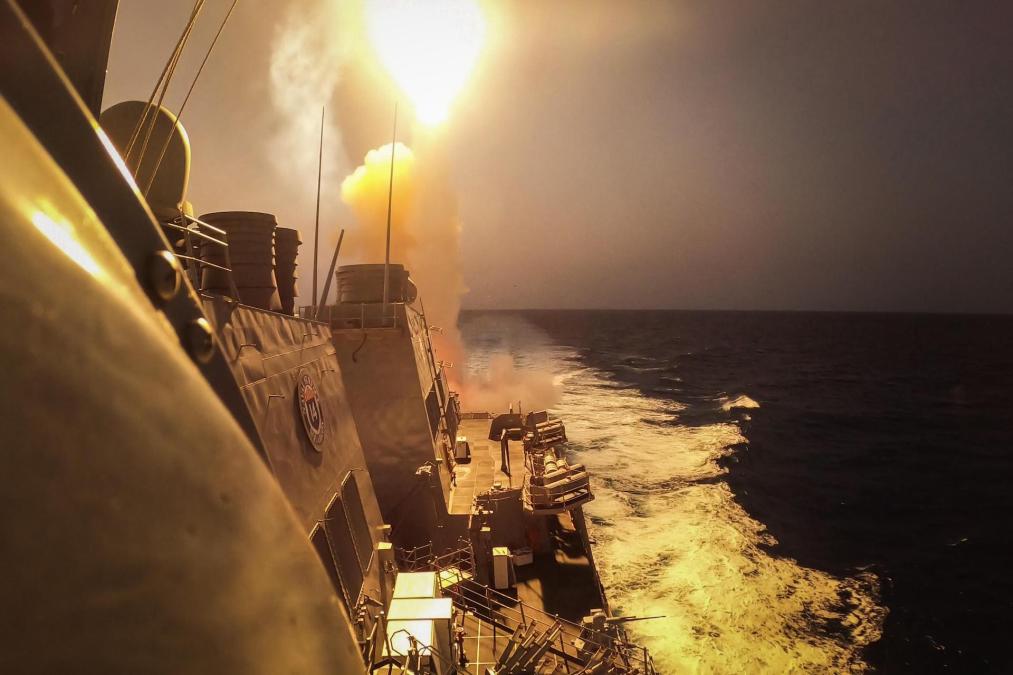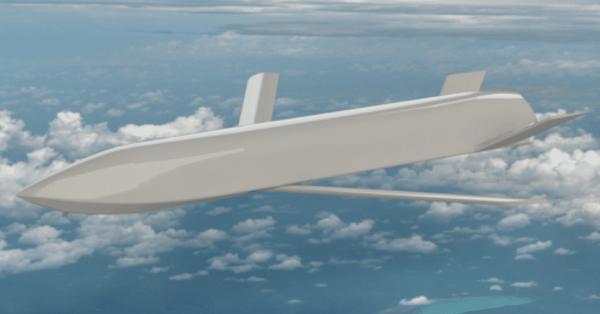DIU helping Navy find cheaper drone interceptors

The Defense Innovation Unit is soliciting industry for less expensive “kinetic” weapons that the Navy could use to shoot down enemy drones.
The sea service has been busy over the past eight months taking out unmanned aerial systems and missiles launched by the Houthis at vessels in the Red Sea, a major global shipping route. While the Navy has been highly successful in its recent air defense missions, Pentagon officials are concerned about the so-called “cost exchange ratio” — where in some cases, multimillion-dollar missiles have been used to take out UAS that only cost a few thousand dollars to make. To help meet the increasing demand for counter-drone tools at a lower price point, the department is looking for new shipborne solutions.
Enter DIU and its commercial solutions opening.
“The growing threat of adversarial unmanned aircraft systems (UAS) poses significant risks to U.S., allied and partner forces, naval vessels, and commercial vessels transiting key maritime routes across the globe,” the unit stated in a new solicitation for an initiative it’s calling Counter NEXT.
“The U.S. is committed to protecting commercial maritime trade and, more importantly, service members conducting maritime operations in contested environments,” it added. “To support this goal, the U.S. Department of the Navy seeks a kinetic defeat solution for group 3+ UAS. The proposed solution must demonstrate a high probability of kinetic defeat on adversarial group 3+ UAS and be more cost effective than the current traditional air defense solutions being used against UAS and available to Naval operational commanders.”
In U.S. military parlance, the term “kinetic” generally refers to weapons that attack their targets by colliding with them or exploding near them, such as missiles or other projectiles. The term “non-kinetic” generally refers to alternative methods of engagement such as directed energy weapons and electronic warfare tools.
For this iteration of Counter NEXT, DIU noted that it’s not interested in directed energy systems.
DE weapons, such as lasers and high-power microwaves, are often touted as having a lower cost-per-shot than kinetic systems. However, those types of capabilities aren’t as proven on the battlefield and they present unique technical and operational challenges compared to kinetic options.
“The U.S. Navy intends to rapidly prototype and conduct a phased operational test and evaluation plan to validate the performance of one or more proposed shipborne kinetic defeat Counter UAS solutions. It is expected that solutions will be capable of expeditious worldwide deployment, integrated with a variety of naval platforms and must display the ability to be easily integrated into the existing sensors onboard a naval vessel,” the DIU solicitation states.
The service wants a counter-drone “effector” and launcher that can be integrated into its ships’ existing combat systems and ancillary support systems, receive radar tracks, have a terminal guidance capability integrated into the effector, and be reloadable at sea.
High-performance reliability, of course, is key.
The Navy is looking for a probability of kill greater than 90 percent to protect its ships from drone attacks within a radius of about 15 kilometers, and greater than 70 percent for area defense to protect shipping lanes and commercial vessels within a similar radius.
Speed of engagement is also an important consideration.
A system that is capable of accelerating “the kill chain by enabling a faster decision loop from initial detection until the launch of the effector is preferred,” the solicitation states. The department wants technology that can support multiple control modes, including so-called “human-in-the-loop” and “human-on-the-loop” kill chains.
Officials are also keen on software upgradability.
“A solution developed using a modular, open source architecture leveraging open and extensible software design principles that enable integration with third-party modular components, where applicable, standardized or common interfaces, and software containerization will be preferred,” per the solicitation. “The solution should be able to demonstrate adaptability to evolving operational threats including the ability to leverage real-time, or near real-time, operational deployment data, logs, and user feedback to assess, correct, and/or improve system behaviors and performance including safely, securely, and promptly deploying software updates to fielded systems.”
Kinetic weapons that can also be directed against other types of unmanned platforms, such as adversaries’ uncrewed surface vessels, “may be given preference,” it noted.
DIU and the Navy are looking to move out quickly. Responses to the solicitation are due June 28. A baseline assessment of proposed solutions is expected at a Navy test facility within 90 days of award, and offerors must demonstrate the ability to deliver up to five “production representative” prototypes within 12 months of award. Follow-on production contracts may be issued without further competition, DIU noted.
“The follow-on production contract or transaction will be available for use by one or more organizations in the Department of Defense and, as a result, the magnitude of the follow-on production contract or transaction could be significantly larger than that of the prototype” award, according to the solicitation.






